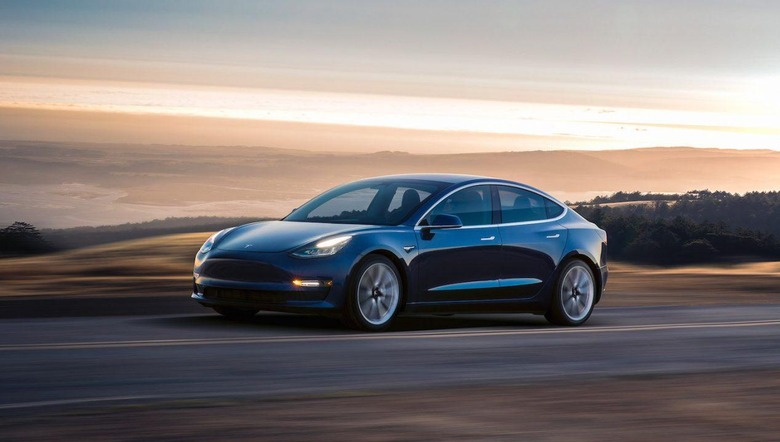Tesla Model 3: One Big Battery Secret Just Got Exposed
New federal documentation has spilled the beans on the Model 3 battery size, despite Tesla's efforts to shift attention away from raw battery size and focus on estimated range instead. The automaker revealed two versions of its newest, most affordable EV late last month, but unlike with previous Model S and Model X models opted not to differentiate them with a numeric suffix. Instead, Tesla said, it plans to shift away from such badging in general.
Until now, Tesla has used an abbreviation based on the battery size in kilowatt-hours to organize its various models. The Model S range, for instance, starts out with the Model S 75, with a 75 kWh battery; at the other end of the scale, there's the P100D, with a 100 kWh battery, the largest Tesla currently offers. The "P" prefix refers to a "Performance" variant, while the "D" suffix indicates the car is all-wheel drive.
That changed with the Model 3. Tesla has detailed two variations on the car, a standard Model 3 with a claimed 220 miles of range, and a Model 3 Long Range, which can manage a claimed 310 miles. The automaker has not said what specific battery pack is in either.

While customers may not need to know, however, the Environmental Protection Agency (EPA) does. A filing for the Model 3 Long Range has revealed the technical details of the car's hardware, Autoblog spotted. According to the PDF, the battery is rated for 350 volts and 230 amp hours, which works out to 80.5 kWh; the motors powering the rear wheels will together muster 258 horsepower.
There doesn't appear to be a filing for the standard Model 3 at this point, which may well be because Tesla is yet to begin manufacturing them. Currently, it's focused on the more expensive, longer range version, as it begins to slowly make its way through its lengthy reservations list. Production of the more affordable Model 3 will begin later in the year, Tesla CEO Elon Musk has promised, though there won't be an all-wheel drive Model 3 until sometime in 2018.
That's an attempt to keep manufacturing straightforward, a lesson hard learned from the Model S and Model X. While those more expensive cars had hundreds of potential configurations that buyers could choose between, Tesla purposefully limited the number of options that Model 3 shoppers would have. Indeed, there are fewer than 100 different total configurations supported, Tesla said recently.
MORE: Tesla Model 3: What you need to know
It's possible that Tesla could even use the same battery pack in both versions of the Model 3, but use an old trick it has relied upon before to differentiate the two. Back in 2016, it was revealed that the Model S 70 had the exact same li-ion battery configuration as that of the Model S 75, since it was more cost-effective to use a single part than manufacture two. Buyers of the Model S 70 were able to "unlock" the full, 75 kWh capacity of their car's hardware with a one-time software upgrade priced at $3,250.
Whether that's the case will hinge on just how much complexity Tesla is willing to stomach in its already-stretched battery supply chain. That's already proved to be a limiting factor in the first half of the year at the top-end of Tesla's range, with yield issues around the Model S and Model X's 100 kWh pack slowing deliveries. The automaker says it's figured out the bottleneck now, though is still expecting to spend billions on new Gigafactory development to meet predicted demand.
